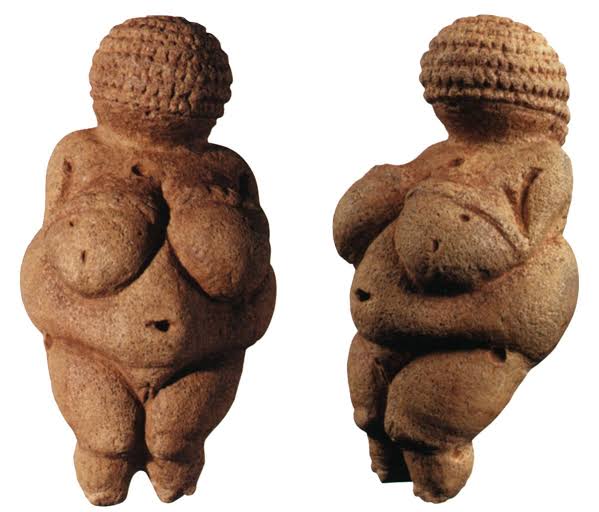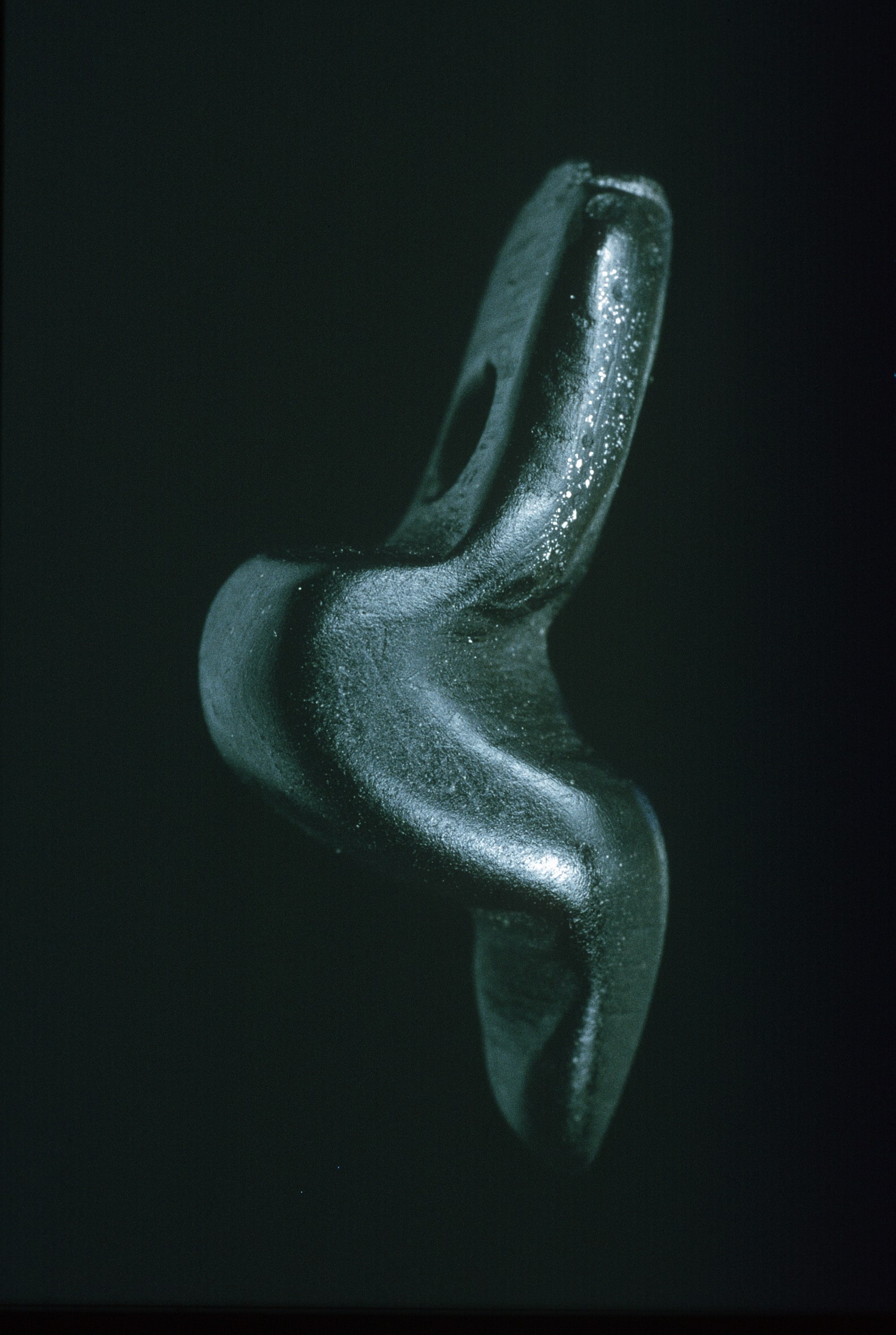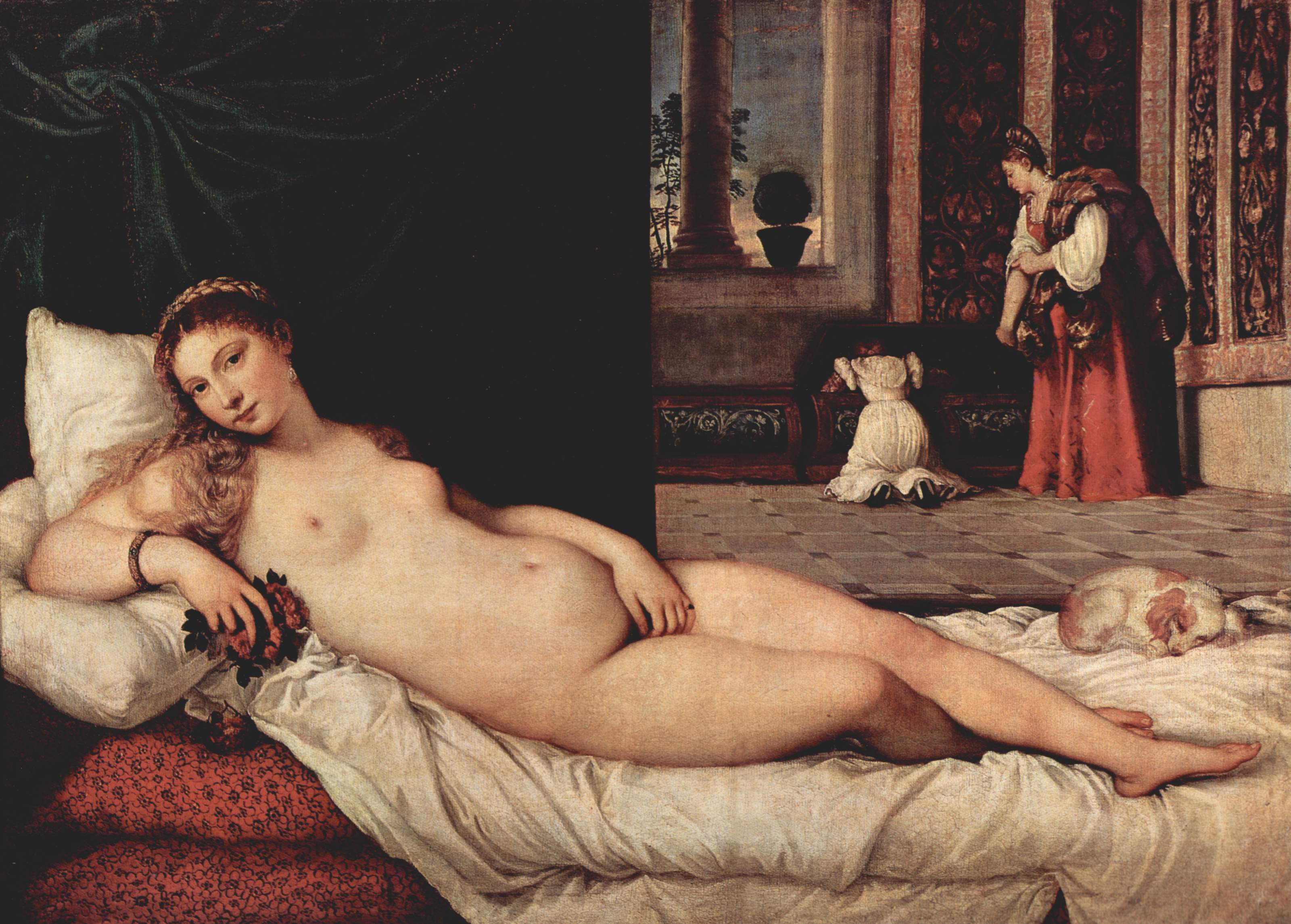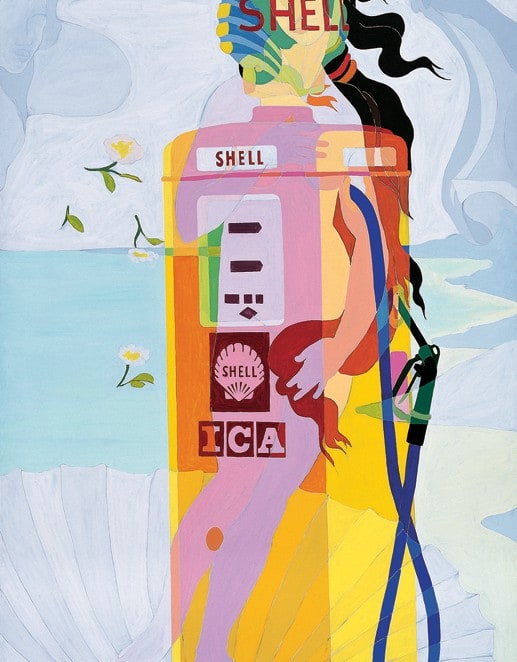23 June 2017

José Sancho does not conceal the voluptuousness of his female torsos; he highlights it. These torsos are symmetrical from front, but on the other hand, from the side, the juxtaposition of concave and convex forms creates dynamism. The artist is interested in creating translucent effects. At times he achieves that transparency by thinning the marble so that the clarity on the other side can be perceived. Other times he pierces the material or splits it in two.
Maternity is a theme that interests the artists very much and this explains why he frequently creates pregnant torsos. The male-female dichotomy is also manifested in his work. Sancho highlights his interest in opposites conceived as complement and contradiction at the same time; they are Hermes and Aphrodite face to face.
We are taking a look at the progression of the Venus figure through time, an image José Sancho made use of abundantly in his work!
Venus is the Roman goddess of love and beauty, known as Aphrodite in the earlier Greek mythology. Venus is frequently portrayed in the ancient Greek and Roman cultures and is featured in many sculptures in these and later periods. The belief that the nude female figurines with exaggerated sexual organs that were found in European archaeological excavations in the 19th and 20th centuries represented fertility fetishes, or maybe a mother goddess cult, led these figurines to be called “Venus figurines”. However this is a metaphorical reference as these prehistoric figurines predate the mythological goddess by thousands of years. For this reason some scholars reject this terminology and call these figurines Woman instead (ex: Woman of Willendorf). As these are prehistoric figurines, what they represent is not known for certain, and they are interpreted as a fertility goddess, a symbol for femaleness, a reflection of the conception of beauty at that time, or the self-representation of singular women in figurines.

1- Venus of Hohle Fels
Venus of Hohle Fels is the oldest undisputed example of a depiction of a human being yet discovered, where researchers agree on the date. The figurine was made from mammoth ivory and was found in the cave of Hohle Fels near Schelklingen in Germany. The figurine was made 35,000 to 40,000 years ago, dating to the Upper Palaeolithic period in Europe. It’s only 6 cm long. Discovered in 2008, it’s currently in the Blauberen Museum. The figurine was found in six pieces, and its left shoulder and arm are still missing. The perforated protrusion found in the place of a head suggests that it may have been strung with a rope/thread or hung.
 2- Venus of Willendorf
2- Venus of Willendorf
The Venus of Willendorf was made 28,000 to 25,000 years ago in the Palaeolithic period. It’s 11 cm long and was found in 1908 around Willendorf in Austria. The figurine was carved from oolitic limestone not local to the area, and tinted with red ochre. It’s currently displayed in the Natural History Museum in Vienna. The body parts associated with fertility and birth are emphasised on the figurine, suggesting that it may be associated with such concepts. It has no visible face, and the head is covered with horizontal circular braided hair, or with a headdress.
 3- Venus of Monruz
3- Venus of Monruz
Venus of Monruz is dated to 11,000 years ago, to the Upper Palaeolithic period (or the beginning of the Epipalaeolithic). It was discovered during a highway construction in Monruz in Switzerland in 1991. It’s only 1,8 cm in length and depicts a stylized human body. The figurine is made from the jet stone.
 4- Venus de Milo
4- Venus de Milo
Venus de Milo is one of the most famous Ancient Greek statues. Made between 130 BCE and 100 BCE, it is believed to feature Aphrodite, the ancient Greek goddess of love and beauty (Venus for Romans). Made from marble, it is slightly larger than life with 203 cm in height. It was discovered in 1820 in the island of Milos in the Aegean, then part of the Ottoman Empire. The original plinth and part of the arm were lost after its discovery. The inscription on the original plinth suggests that the statue was made by Alexandros of Antioch. It’s currently on display in the Louvre Museum in Paris.
 5- Venus Callipyge and Georges Brassens
5- Venus Callipyge and Georges Brassens
Venus Callipyge is also known with its Greek name “Aphrodite Kallipygos”. It’s believed to be an Ancient Roman marble copy of an earlier Greek original. The literal meaning of its name is “Venus of the Beautiful Buttocks” in English. The statue is traditionally believed to depict the goddess Venus, however it could also depict a mortal woman. The marble copy that is still extant today dates to 1st century BC, whereas the lost Greek original is believed to be made of bronze in 3rd century BC, to the beginning of the Hellenistic period. The origin of the marble copy is not known, but it was re-discovered in the Early Modern Period with its head missing. The head was restored first in the 16th century and then in the 18th century. The head was restored looking over its shoulder, which drew more attention to the buttocks and contributed to its popularity.
In the 20th century the French singer Georges Brassens wrote a song called Vénus Callipyge which brought yet again more popularity to the statue.

6- Botticelli – Venüs’ün Doğuşu (Nascita di Venere)
Birth of Venus was made by Sandro Botticelli most likely in the middle of 1480s. It depicts the goddess Venus arriving at the shore on a shell after her birth. The painting is in the Uffizi Gallery in Florence – Italy. Along with Botticelli’s Primavera it’s one of the iconic paintings of the Italian Renaissance. After the antiquity, the subjects from classical antiquity were not depicted on such large scales in the Western art until these two paintings.

7- Titian – Venus of Urbino (Venere di Urbino)
The Venus of Urbino was made by the Italian master Titian in 1538. It depicts a woman associated with the goddess Venus in a Renaissance palace. The oil-on-canvas painting is displayed in the Uffizi Gallery in Florence, Italy. The painting is based on Giorgione’s Sleeping Venus dated ca 1510.
 8- Alain Jacquet – Camouflage Botticelli (Birth of Venus)
8- Alain Jacquet – Camouflage Botticelli (Birth of Venus)
Camouflage Botticelli (Birth of Venus) is part of the Camouflage series made between 1962-4 by French artist Alain Jacquet. In the oil-on-canvas painting, Jacquet reproduced the “Birth of Venus” by Sandro Boticelli, which depicts Venus on a shell. On the front of Jacquet’s Venus figure is a gas pump inscribed with the word “Shell” and the company logo of the gas company. In the Roman mythology, shell is one of the symbols of the goddess Venus. Even though he is not directly connected to the French Nouveaux Réalistes artists of the 1960s nor the pop art artists, Jacquet is frequently associated with these two movements. The painting is in the Fort Worth Modern Art Museum in the United States of America.
José Sancho: Erotic Nature exhibition took place at Pera Museum between 25 May - 06 August 2017.
Written by Ayşe Bursalı

The exhibition Look at Me! Portraits and Other Fictions from the ”la Caixa” Contemporary Art Collection examines portraiture, one of the oldest artistic genres, through a significant number of works of our times. Through the exhibition we will be sharing about the artists and sections in Look At Me!. This time we are sharing about Janine Antoni , exhibited under the section “The Conventions of Identitiy”!
Tuesday - Saturday 10:00 - 19:00
Friday 10:00 - 22:00
Sunday 12:00 - 18:00
The museum is closed on Mondays.
On Wednesdays, the students can
visit the museum free of admission.
Full ticket: 300 TL
Discounted: 150 TL
Groups: 200 TL (minimum 10 people)